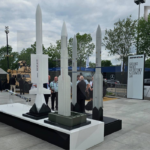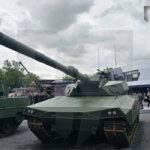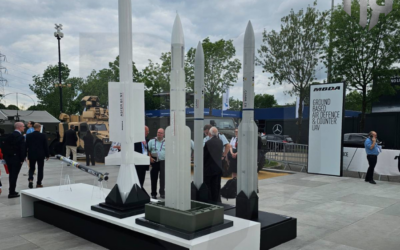The elected mayor of Heimarra and Member of the European Parliament of New Democracy will remain in prison until October…

Nine states are strengthening their nuclear arsenals amid the armed conflict in Ukraine and the wider deterioration of the global security situation, the Swedish think tank Stockholm International Peace Research Institute (SIPRI) points out.
The global stockpile of nuclear warheads fell by nearly 200 to about 12,512 from early 2022 to early 2023, SIPRI notes in its annual report. Yet the number of nuclear weapons classified as operational, that is, ready to be used, increased by 86, and is now estimated to reach 9,576.
Not only do global reductions in operational nuclear warheads appear to have frozen, but their numbers are rising again, the institute’s researchers warn. At the same time, both the US and Russia have embarked on extensive and expensive programs to replace and modernize their nuclear warheads, missiles, aircraft, and submarines capable of launching them as well as their nuclear weapons production facilities.
Also read: SIPRI | Military spending in Europe peaks since the Cold War
For decades, the number of nuclear weapons has been steadily declining. However, the decrease was due mainly to the destruction of decommissioned nuclear warheads by Russia and the US. Researchers emphasize operational arsenals. As SIPRI reminds, in addition to Russia and the USA, China, France, Britain, Pakistan, India, Israel, and North Korea have such capabilities.
Most nuclear-weapon states are hardening their rhetoric about the importance of nuclear weapons and some have gone so far as to directly or indirectly threaten their potential use, notes Matt Korda, one of the report’s authors. Even worse, the diplomatic efforts to reduce nuclear arsenals have suffered heavy blows.
Russian President Vladimir Putin suspended New START – the only major US nuclear arms control agreement remaining in force – in February 2023.
In addition, negotiations to restore the international agreement on Iran’s nuclear energy program, officially the Joint Comprehensive Plan of Action (JCPOA), have been sidelined and overshadowed by Tehran’s support for Moscow and the political situation in the Islamic Democracy. A successful outcome of the effort to bring the parties back into full compliance appears unlikely, SIPRI finds.
Also read: Russia | Duma votes to suspend Russia’s participation in New START treaty
Russia and the US are by far the states with the largest arsenals: together, they possess about 90% of nuclear warheads. China has long occupied third place.
Most of the increase in operational heads is due to China, which from 350 arrived at 410. Beijing is investing heavily in its military to the degree that the Chinese economy and Chinese influence expand, according to SIPRI director Dan Smith.
India, Pakistan, and North Korea also increased their arsenals, like Russia, to a lesser extent (from 4,477 to 4,489 warheads), while the other powers with nuclear arsenals kept them as they were.
However, Mr. Smith notes that the world’s nuclear arsenal is still well below the 1980s, when it was surpassing 70,000 warheads.
For him, the increase in stocks cannot be explained simply by the war in Ukraine, taking into account factors such as the time required for their development and the fact that most countries that made this choice are not directly affected by the armed conflict.
Also read: SIPRI | Increase in arms imports to Europe – US dominance of global arms trade
READ MORE
Ukraine | Satellite images depict destruction of Russian drone base
Ukraine claims that satellite images show the destruction of a Russian warehouse used to launch Iranian-made drones and train cadets.
EU | Accession negotiations with Ukraine and Moldova officially kick off Tuesday
EU Finance Ministers meeting in Luxembourg formally approved the framework for negotiations with the two candidate countries…
EUROSATORY 2024 | Missile Artillery Solutions from MBDA
With such a large number of interested attendees at MBDA’s pavilion at the Eurosatory 2024 Defence exhibition, the stand reminded of an…
KNDS | Showcases full range of LEOPARD battle tanks at EUROSATORY
KNDS continues to expand its technological advantage in the field of main battle tank development, as we have witnessed at the Defence and…
THEON SENSORS | Distinguishing appearance at EUROSATORY 2024 with new range of products
THEON SENSORS attended the International Defence and Security Exhibition EUROSATORY 2024 as an ambassador of Greek innovation…
Ministry of Defence | Organization of Hellenic EDF Info Day
A Conference entitled “EDF Info Day” is organized in the Amphitheater of the National Gallery on Tuesday, July 9 from 09:00 to 17:00.
ALTUS LSA | Participates in EUROSATORY 2024 with KERVEROS in the foreground
The participation of ALTUS LSA in EUROSATORY 2024 is among the Greek participations of operational significance.
Freddy Beleris | Ιn jail until October
The elected mayor of Heimarra and Member of the European Parliament of New Democracy will remain in prison until October…




















